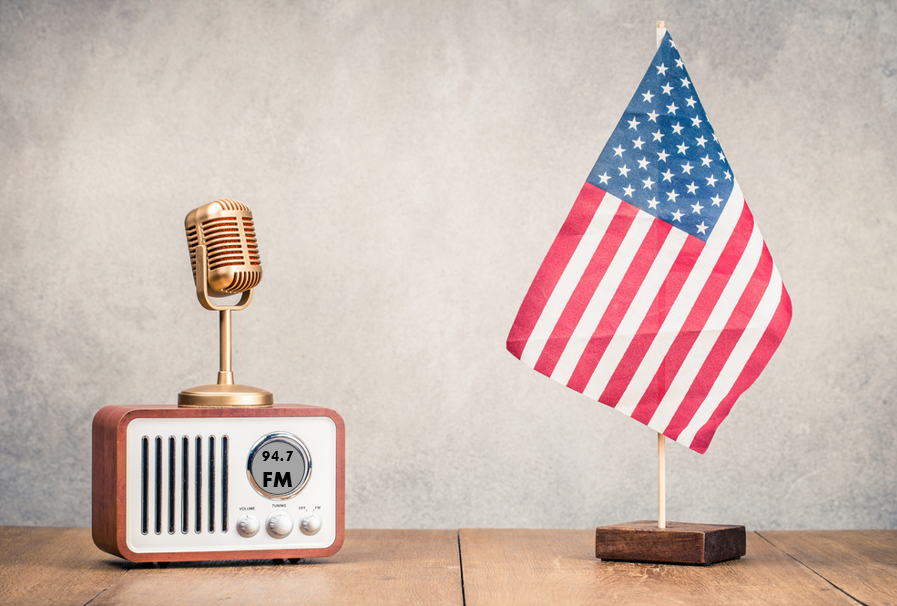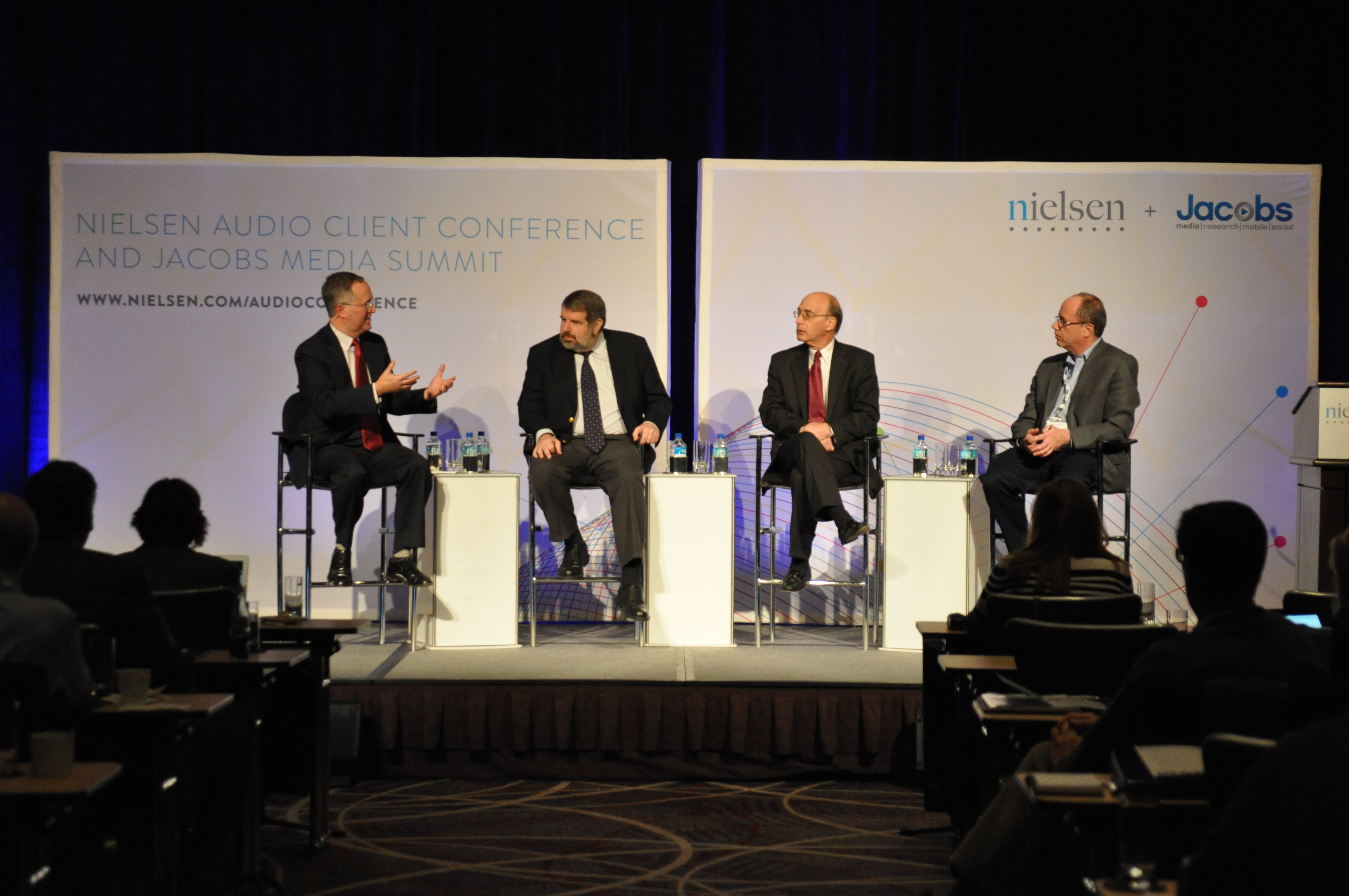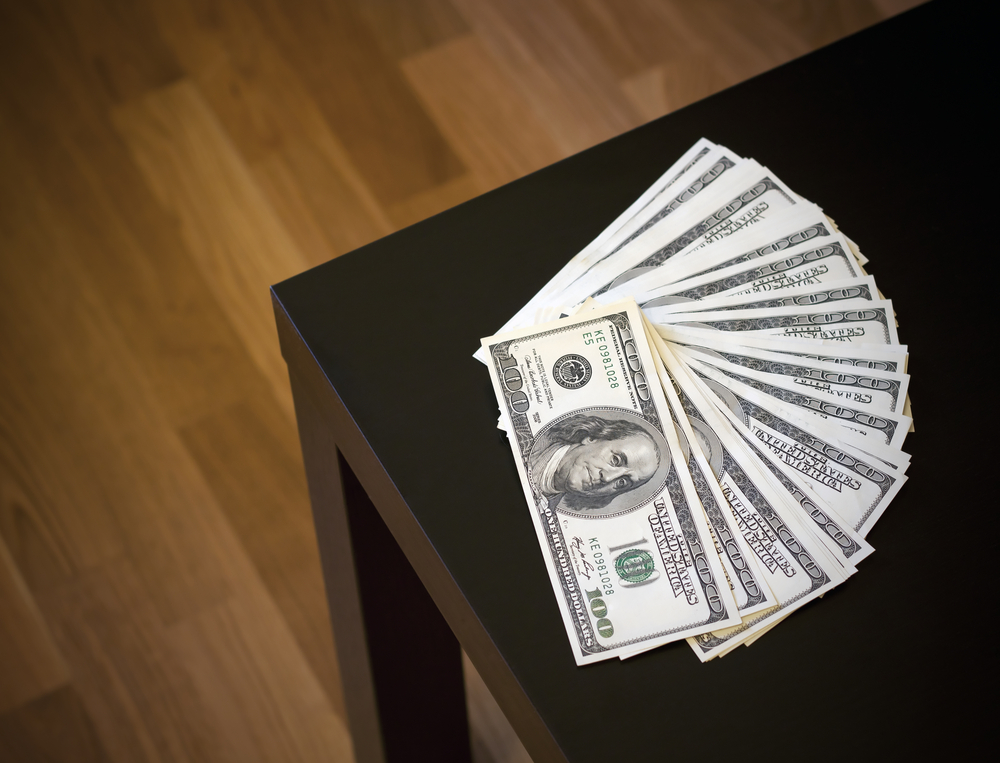
Don’t read today’s blog headline the wrong way. It is not about why you should start talking about indictments, Hunter Biden, and wokeness.
If you’re reading this post about radio and politics and you think you’ve read it before – you probably have. But that’s the cyclic nature of politics and radio’s inability to get its fair share of campaign spending.
It seems like we have this same conversation every year where radio doesn’t just come up a little short to digital and commercial TV – it woefully runs a deficit, often overlooked by campaign strategists. This is in spite of the fact radio is the oldest advertising platform when elections take place.
The newest eruption of bad political news for radio ran in yesterday’s Radio Ink. In a story titled “Political Cash Heaved Into Fading TV Market While Radio Gets 5%,” they reported on new data from BIA Advisory Services with the sobering news that over the air radio will rake in just 5% of political ad dollars this year, compared to a whopping 56% for traditional TV and cable.
Yes, a little back of the cocktail math tells you that’s a 10x differential. So, have a cocktail, because this data suggests radio broadcasters will end up being as disappointed as Asa Hutchinson, Doug Burgum, and Francis Suarez when all is said and done.
If you need to see it in pie chart form in order to appreciate just how pathetic radio’s portion of the dollars is projected to be, have at it:

What accounts for this disconnect between the oldest over the air medium and the world of politics?
In that same issue, Radio Ink columnist, Buzz Knight, wrote a story that is very much intertwined with the political advertising debate: “Two TV Headlines That Radio Should Be Aware Of”
The two articles in question are “Streaming Giants Bet Price Increases Won’t Scare Off Customers” in the Wall Street Journal, and the second, “TV Makes Up Less Than 50% of U.S. Viewing For First Time” from CNN.com. Both strongly suggest “TV Land” is in a world of chaos and hurt.
In particular, over the air and cable TV are in dire straits. Had these stories been about radio’s loss of potency and relevance, we’d be wringing our hands. And yet, the BIA data indicates television – OTA + cable – will reap windfalls of campaign dollars this year with more coming.
Ironically, Buzz missed a headline that ran over the weekend in MediaPost with the discouraging title, “Who’s Still Watching TV?” (Answer: On the pay TV side in the most recent quarter, the estimate is more than a 7% drop year over year, “the fastest pace of decline yet.”)
than a 7% drop year over year, “the fastest pace of decline yet.”)
Yet, TV is going to be handed the highest share of political advertising this year, well more than half of every dollar spent. What’s wrong with this picture? Or better put, what are these campaign strategists thinking? Or are they thinking?
The disparity goes beyond political pols’ addiction to TV. The frustration is that radio isn’t a more accepted marketing tactic. JacoBLOG readers may recall me writing a number of posts four years ago leading into the 2020 election.
And here we go again. Tonight marks the first Republican debate in what promises to be a record-breaking cycle for political ad spend. But for radio, that BIA study is a financial shot across the bow. Why is the best hope that TV will sell out its advertising inventory, forcing campaigns to turn to radio, who has spots to sell?
For me, this conundrum goes all the way back to 2013 at a Nielsen Audio conference shortly after they acquired Arbitron. Larry Rosin and Joe Lenski from Edison moderated a panel of a pair of political operatives representing both major parties.
In spite of their differences, Mark Mellman (on the left) and David Winston (on the right) concurred radio was a poor choice for political campaign spending. Mellman, in fact, suggested radio was an unproven

medium for moving the needle for a candidate or ballot proposal:
“You’ve got to show people, in a controlled experiment, what the impact was (of radio).”
At that time and in this space since, I’ve questioned why a medium that’s been around for a century continues to struggle to establish its bona fides as an effective political marketing tool. Radio was where F.D.R. broadcast his famous “Fireside Chats” (a term we still use today). And millions count on election coverage on radio for local races, primaries, and the big elections. And yet, radio remains the Rodney Dangerfield of political advertising.
I don’t have the answers for how to turn this around. But I do know this. Candidates, PACs, and other organizations are expected to spend more than $11 billion in political advertising in 2024. That’s not too far off total radio revenue for American radio this year. So, a difference of 1% or 2% is serious money for a radio industry where :30s and :60s aren’t exactly flying off the shelves. Demand for radio inventory is scary slow. So, to leave more money on the table is simply unconscionable this year and next.
 And we’re not off to a great start. Aside from Senator Tim Scott (R-SC) (pictured), I couldn’t find any sign Republican candidates are spending radio dollars for the all-important Iowa primary early next year. The Washington Post reports an upcoming $8 million buy. Here’s the split:
And we’re not off to a great start. Aside from Senator Tim Scott (R-SC) (pictured), I couldn’t find any sign Republican candidates are spending radio dollars for the all-important Iowa primary early next year. The Washington Post reports an upcoming $8 million buy. Here’s the split:
“The presidential campaign for Sen. Tim Scott (R-S.C.) is launching an $8 million advertisement buy, marking a second major investment by the campaign since Scott announced his presidential run three months ago. According to a senior Scott official, the ad buy dedicates $6.6 million toward television ads. Scott will also launch a six-figure radio and digital ad campaign during that period.”
Yup, TV gets the lion’s share. For radio, a smallish percentage as per usual.
So, what to do:
- Isn’t this important enough for radio to put together an industry task force, perhaps spearheaded by the RAB? It could convene this fall, and hopefully draw attention to the idea radio deserves its fair share of political ad spend next year and is willing to campaign for it.
- Start collecting “success stories” from the last campaign where radio worked. Put them up on a website, and use excess inventory (there’s plenty) to draw attention to it. I’ll start. From a blog post in 2020, I detailed ad spending for the Biden-Trump race. Yes, Trump was outspent in every ad category, but note the weight the Biden campaign put on radio. Earlier coverage indicated a large share of those dollars were spent on ethnic radio. Smart. And last I checked, Biden came out the winner in 2020.

- The Iowa and New Hampshire primaries are the biggies early next year. So, why not a full-court press for radio in both races, perhaps even approaching candidates back in the pack to heavy up on radio spending. Why couldn’t both of these early races be referendums on radio and its efficacy in the upcoming Presidential contest?
- Don’t just focus on the Presidential race, which will be fought in a handful of states. In 2024, all of the House races will be up for grabs, as well as a third of the Senate. There’s tons of state elections, races for Governor, and those ever-popular (and lucrative) ballot initiatives. Start introducing yourselves to the campaign chairs as well as those responsible for the ad budgets. Identify the agencies most-used by politicians. While the Presidential race will get the attention, leverage radio’s local strength to scoop up these other dollars, which aren’t insignificant.
Will this prove to be another political year where radio leaves big dollars on the table?
The BIA study is a distant early warning. Radio can ignore it at its own peril
Unlike the politicians fighting to win an office, radio doesn’t have to come out on top.
But it has to show up for the race.
This blog post was approved by Fred Jacobs.
- For Radio, What Is The Future Of Nostalgia? - January 7, 2025
- The Commish - January 6, 2025
- How Radio Can Improve Its Digital Content Batting Average - January 3, 2025




I am a former State Legislator and former nominee for Congress. I also own several radio stations. TV gets an edge for significant races because of it’s massive geographical reach. Political consultants make money on TV buys and production. They can’t charge big fees with audio ads. Also, many states will not see much political business if one party has a lopsided edge. For example, Indiana has a Super Majority in both Chambers and held Governors office since 2004. When races are not competitive, the money flows to targeted races. The sad truth today, 85% or more of Congressional seats are not competitive today in the General Election. If you have competitive local races, you need to treat politicians like a regular prospect. Reach out early and often and present them an idea. You must cultivate local races. Do not expect the phone to ring.
Dave, this is great advice from someone who’s been on both ends of this. I hope broadcasters read it and take it to heart. Thanks for the spot-on comment.
Ad-wise, TV can also make use of inflammatory images and flashy production eye candy. Pretty shiny things cost money but also grab eyeballs, even if the sound is off. And the best ones get extra mileage when run for free as news items on TV talk programing (look at anything done by Lincoln Project). Radio is at a distinct loss in that respect.
In order to be successfully competitive, radio political ads are going to require copy that is flawlessly written, impeccably voiced and produced with all the attention to detail as a Mercury winner. Problem is, many stations and clusters barely have the resources now to do that for their core advertisers.
Time to get innovative.
I was about to make the same point. Fear imagery has become such a key feature and sadly effective tool of political advertising that pursuing the same degrading approach is much more difficult in audio only ads. And you’re correct that writing effectively for radio/audio is not a commonly held skill on political election teams.
There’s no doubt, Alan, that creative may carry the day, especially in local races. Problem is, the copy/production of political ads often come from the campaigns and candidates themselves. Audio is powerful, but only when highly crafted.
Also of note is the recent story that Newsmax’s large amount of coverage of candidate Perry Johnson might be due to his ad buys there…
https://www.semafor.com/article/08/20/2023/republican-candidate-say-newsmax-tried-to-make-him-pay-for-coverage
And within that 5.4% is often a misappropriation of the spend.
Advertise only on talk or news stations and you’ll mostly be reaching people who have already made their voting decisions.
When and where there are close races—
And it looks as though the White House will be…
The uncommitted and not-thrilled-with-the-choices voter will be key.
That’s when advertising on the top-rated radio music stations is smart.
That’s where a concise and compelling audio message may—sway.
Marty, no question that radio’s ability to hyper-target specific audiences in each market/state could be a difference-maker in an already too-close-to-call election. Buckle up!